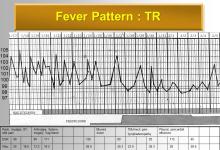SLE, Antiphospholipid Antibodies, and the Placenta Save

It is well established that women with systemic lupus erythematosus (SLE) are at increased risk for adverse pregnancy outcomes, including preeclampsia, preterm birth, and pregnancy loss. However, the pathophysiologic mechanisms driving these complications are not yet fully understood. In this article, we explore several proposed pathways where the immune system and placenta interface, summarized in Figure 1, that may enhance our understanding of these risks.
Immune Cell Deposition and Subsequent Placental Inflammation
The deposition of autoantibodies and innate immune cells in placental tissue can elevate levels of inflammatory mediators. Previous research has identified the presence of anti-nuclear antibodies (ANA) and antiphospholipid antibodies (aPL) in the placenta, which are capable of activating trophoblasts1. This activation can lead to trophoblast dysfunction and dysregulation, processes frequently associated with preeclampsia. Inflammatory mediators, such as neutrophils, neutrophil extracellular traps (NETs), decidual natural killer (NK) cells, macrophages, and interferons, may further contribute to placental impairment and negative pregnancy outcomes.
Decidual Vasculopathy and Thrombosis
The presence of immune cells and resultant placental inflammation can contribute to vascular abnormalities observed in the decidual tissue of patients with SLE. The decidua, a thin maternal tissue layer of the placenta, plays a vital role in regulating placental blood flow, and vascular pathology in this region can lead to impaired perfusion for both mother and fetus. Complement and immunoglobulin deposition within the decidual vasculature have been described. Notably, conditions such as decidual vasculopathy and the presence of thrombi are linked to adverse outcomes, including preterm birth and fetal demise2.
Thrombosis may also result from the presence of antiphospholipid antibodies, particularly anti-beta 2 glycoprotein I, which has been detected in trophoblasts and decidual endothelial cells. This antibody reduces levels of vascular endothelial growth factor and placental growth factor, disrupts trophoblast function, and triggers activation of the complement cascade. Collectively, these immunologic alterations promote a pro-inflammatory environment that can lead to adverse pregnancy outcomes.
Short-and Long-Term Clinical Manifestations of Pregnancy Complications
The above changes are proposed mechanisms for the increased risk of preeclampsia, preterm delivery, in patients with SLE and aPL3. Additionally clinical consequences include chronic villitis, which has been observed in 0-66% of placental tissue from women with SLE. There is debate over the origin of villitis, as infections agents could be an alternative explanation. Lastly, decreased placental weight, a finding seen in more than half of women with SLE, can serve as a predictor for stillbirth.
The vascular dysfunction observed in placental tissue can contribute to the risk of preeclampsia. Women who develop preeclampsia during pregnancy are at significantly increased risk for hypertension, ischemic heart disease, valvular disease, heart failure, and stroke throughout their lifetime. Patients with recurrent preeclampsia in subsequent pregnancies have even higher long term health risks.
To reduce the heightened risk of adverse pregnancy outcomes in women with SLE, a deeper understanding of the underlying pathophysiologic mechanisms is essential. The health risks associated with preeclampsia extend beyond pregnancy and the peripartum period, contributing to long-term organ damage and life-threatening conditions. This underscores the critical importance of optimizing maternal health both before and during pregnancy. For women with SLE, this involves planning pregnancy during periods of disease remission, continuing pregnancy safe medications, and receiving continuous care from a rheumatologist throughout the gestational period.
References:
1. Mulla MJ, Salmon JE, Chamley LW, Brosens JJ, Boeras CM, Kavathas PB, et al. A role for uric acid and the Nalp3 inflammasome in antiphospholipid antibody-induced IL-1β production by human first trimester trophoblast. PLoS One. 2013 Jun 6;8(6):e65237
2. Ogishima D, Matsumoto T, Nakamura Y, Yoshida K, Kuwabara Y. Placental pathology in systemic lupus erythematosus with antiphospholipid antibodies. Pathol Int. 2000 Mar;50(3):224-9. doi: 10.1046/j.1440-1827.2000.01026.x. PMID: 10792786.
3. Kim MY, Guerra MM, Kaplowitz E, Laskin CA, Petri M, Branch DW, et al. Complement activation predicts adverse pregnancy outcome in patients with systemic lupus erythematosus and/or antiphospholipid antibodies. Ann Rheum Dis. 2018 Apr;77(4):549-555.










If you are a health practitioner, you may Login/Register to comment.
Due to the nature of these comment forums, only health practitioners are allowed to comment at this time.